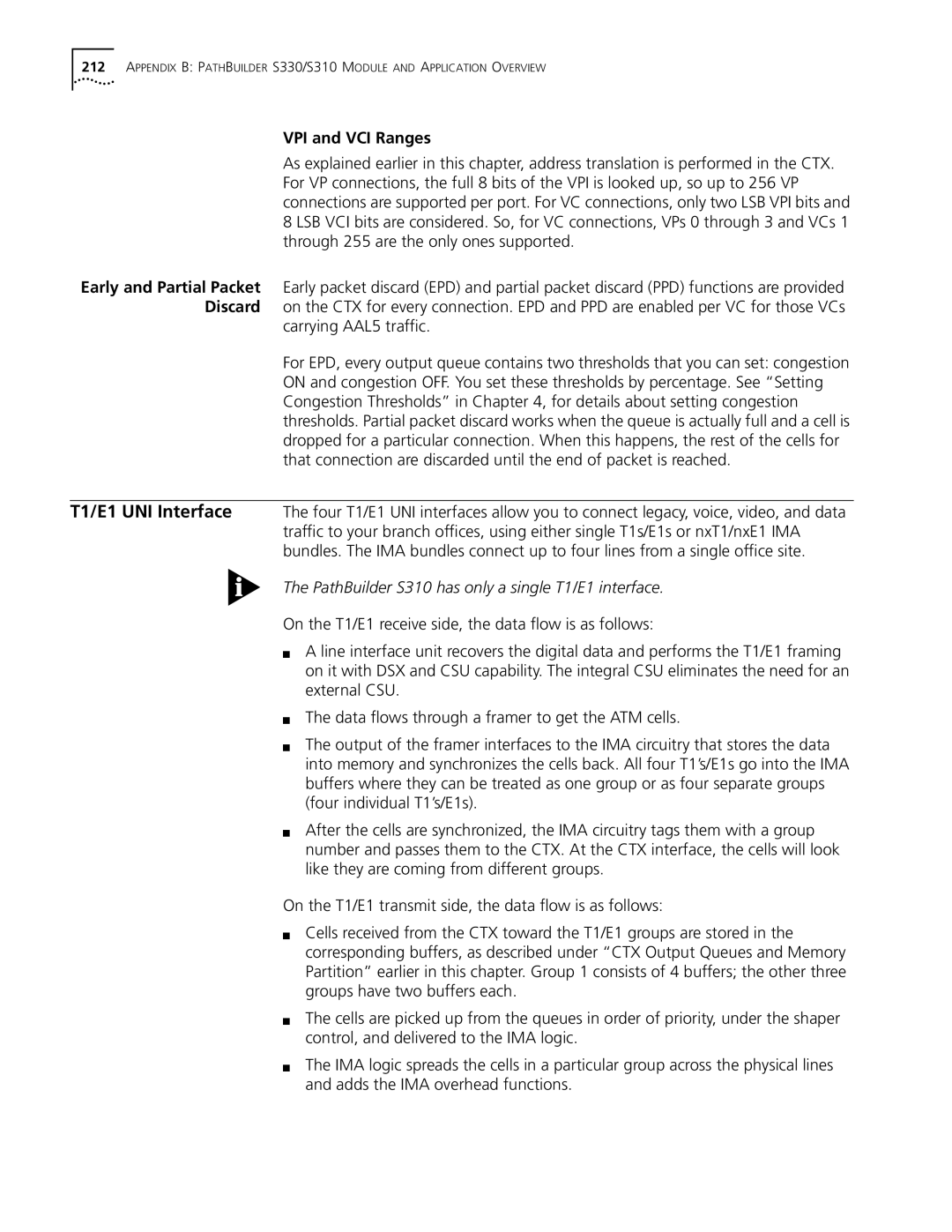
212APPENDIX B: PATHBUILDER S330/S310 MODULE AND APPLICATION OVERVIEW
VPI and VCI Ranges
As explained earlier in this chapter, address translation is performed in the CTX. For VP connections, the full 8 bits of the VPI is looked up, so up to 256 VP connections are supported per port. For VC connections, only two LSB VPI bits and 8 LSB VCI bits are considered. So, for VC connections, VPs 0 through 3 and VCs 1 through 255 are the only ones supported.
Early and Partial Packet Early packet discard (EPD) and partial packet discard (PPD) functions are provided Discard on the CTX for every connection. EPD and PPD are enabled per VC for those VCs
carrying AAL5 traffic.
For EPD, every output queue contains two thresholds that you can set: congestion ON and congestion OFF. You set these thresholds by percentage. See “Setting Congestion Thresholds” in Chapter 4, for details about setting congestion thresholds. Partial packet discard works when the queue is actually full and a cell is dropped for a particular connection. When this happens, the rest of the cells for that connection are discarded until the end of packet is reached.
T1/E1 UNI Interface The four T1/E1 UNI interfaces allow you to connect legacy, voice, video, and data traffic to your branch offices, using either single T1s/E1s or nxT1/nxE1 IMA bundles. The IMA bundles connect up to four lines from a single office site.
The PathBuilder S310 has only a single T1/E1 interface.
On the T1/E1 receive side, the data flow is as follows:
■A line interface unit recovers the digital data and performs the T1/E1 framing on it with DSX and CSU capability. The integral CSU eliminates the need for an external CSU.
■The data flows through a framer to get the ATM cells.
■The output of the framer interfaces to the IMA circuitry that stores the data into memory and synchronizes the cells back. All four T1’s/E1s go into the IMA buffers where they can be treated as one group or as four separate groups (four individual T1’s/E1s).
■After the cells are synchronized, the IMA circuitry tags them with a group number and passes them to the CTX. At the CTX interface, the cells will look like they are coming from different groups.
On the T1/E1 transmit side, the data flow is as follows:
■Cells received from the CTX toward the T1/E1 groups are stored in the corresponding buffers, as described under “CTX Output Queues and Memory Partition” earlier in this chapter. Group 1 consists of 4 buffers; the other three groups have two buffers each.
■The cells are picked up from the queues in order of priority, under the shaper control, and delivered to the IMA logic.
■The IMA logic spreads the cells in a particular group across the physical lines and adds the IMA overhead functions.
